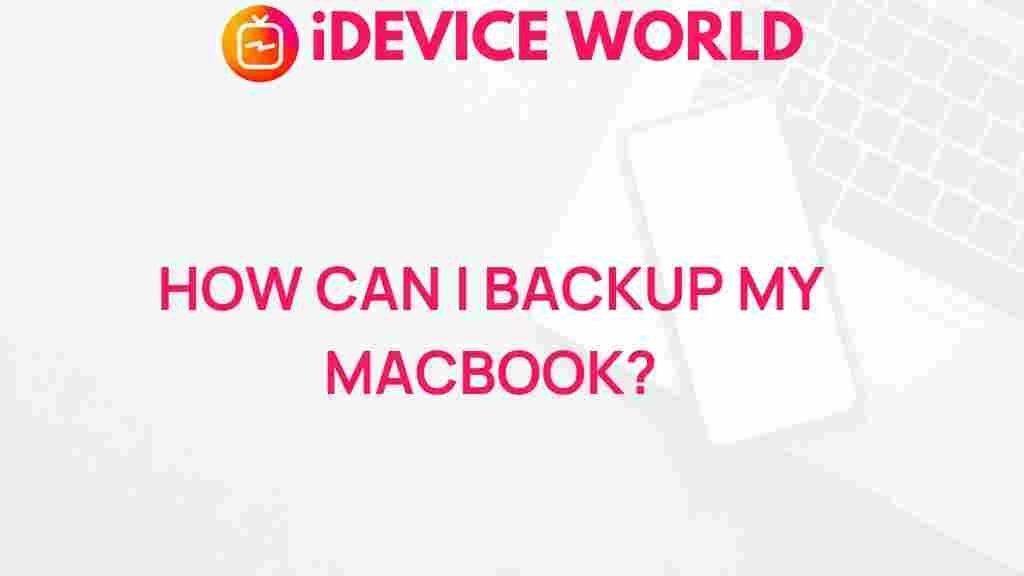Unveiling the Ultimate Guide to Safeguarding Your MacBook
In today’s digital age, your MacBook is not just a device; it’s an essential part of your daily life, containing valuable personal and professional information. With the increasing number of cyber threats and physical dangers, safeguarding your MacBook is paramount. This guide will explore effective strategies, tips, and best practices to ensure your MacBook remains secure from both digital and physical threats.
Understanding the Risks to Your MacBook
Before we delve into the solutions, it’s crucial to understand the potential risks that can jeopardize your MacBook:
- Cybersecurity Threats: Malware, ransomware, phishing attacks, and data breaches.
- Physical Risks: Theft, accidental damage, and environmental hazards.
- Data Loss: Unforeseen circumstances that could lead to loss of important files and data.
Step-by-Step Process to Safeguard Your MacBook
Let’s explore a comprehensive, step-by-step process to ensure the security of your MacBook:
1. Keep Your macOS Updated
Regular updates are essential for maintaining the security of your MacBook. Apple frequently releases updates that include security patches and improvements. Here’s how to check for updates:
- Click on the Apple menu in the top-left corner.
- Select “System Preferences.”
- Click on “Software Update.”
- Install any available updates.
2. Use Strong Passwords
A strong password is your first line of defense. Ensure your password is complex, combining letters, numbers, and symbols. Avoid using easily guessable information like birthdays or names. Consider using a password manager to keep track of your passwords securely.
3. Enable Firewall and Security Features
Your MacBook comes with built-in security features, including a firewall. To enable it:
- Open “System Preferences.”
- Click on “Security & Privacy.”
- Go to the “Firewall” tab and click on “Turn On Firewall.”
This will help protect your MacBook from unauthorized access and attacks.
4. Install Antivirus Software
While macOS is generally more secure than other operating systems, it’s still susceptible to malware. Invest in reputable antivirus software that provides real-time protection and regular scans. Popular options include:
- Malwarebytes
- Bitdefender
- Intego
5. Backup Your Data Regularly
Data loss can happen for various reasons, from hardware failures to accidental deletion. Use Time Machine, the built-in backup feature of macOS, to keep your files safe:
- Connect an external hard drive.
- Open “System Preferences” and select “Time Machine.”
- Toggle “Back Up Automatically” to enable backups.
Additionally, consider cloud storage options like iCloud or Google Drive for extra redundancy.
6. Be Cautious with Public Wi-Fi
Using public Wi-Fi networks can expose your MacBook to potential security risks. Here are some tips to stay safe:
- Use a Virtual Private Network (VPN) to encrypt your internet connection.
- Avoid accessing sensitive information, such as banking details, on public networks.
- Always disconnect from the network when not in use.
7. Secure Physical Access
Physical security is as crucial as digital security. To protect your MacBook from theft or damage:
- Use a laptop lock when in public places.
- Never leave your MacBook unattended in a public space.
- Invest in a protective case to prevent accidental damage.
Troubleshooting Tips for Common Issues
Even with the best precautions, issues can arise. Here are some troubleshooting tips for common problems:
1. If Your MacBook is Running Slow
Try these steps to speed up your MacBook:
- Close unnecessary applications.
- Clear cache files and temporary data.
- Check for malware using your antivirus software.
2. If You Can’t Connect to Wi-Fi
Here’s how to troubleshoot Wi-Fi issues:
- Check your router and modem for connectivity.
- Restart your MacBook and the router.
- Forget the network and reconnect:
- Go to “System Preferences.”
- Select “Network.”
- Choose Wi-Fi, then “Advanced.” Select the network and click “Forget.”
3. If You Experience Frequent Crashes
Frequent crashes can indicate a serious problem. To troubleshoot:
- Check for software updates and install them.
- Run the Disk Utility tool to repair disk permissions.
- Consider resetting the NVRAM/PRAM by holding down Command + Option + P + R during startup.
Conclusion
Safeguarding your MacBook is an ongoing process that requires attention and diligence. By following the steps outlined in this guide, you can significantly reduce the risks of cyber threats and physical damage. Regularly updating your security measures, using strong passwords, and backing up your data will ensure your MacBook remains a safe and reliable tool for years to come.
For more detailed information on Mac security, check out the official Apple support page here.
Remember, a proactive approach is key to keeping your MacBook secure!
This article is in the category Guides & Tutorials and created by iDeciveWorld Team
